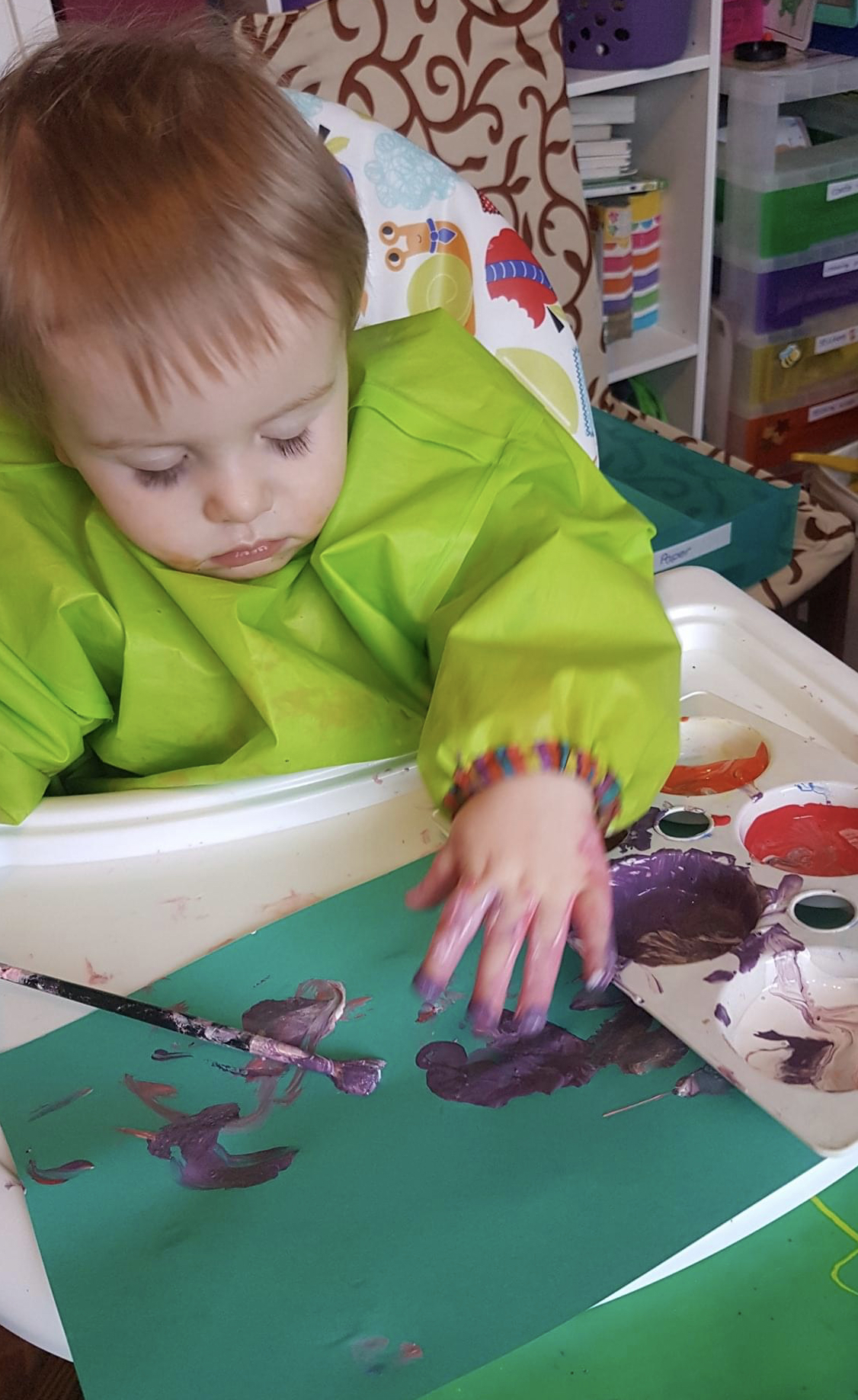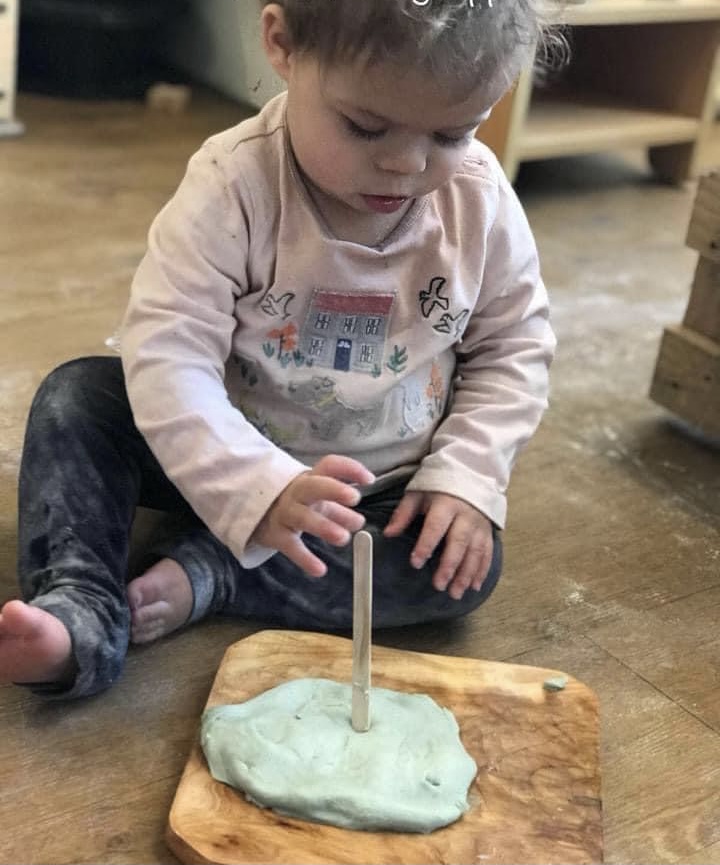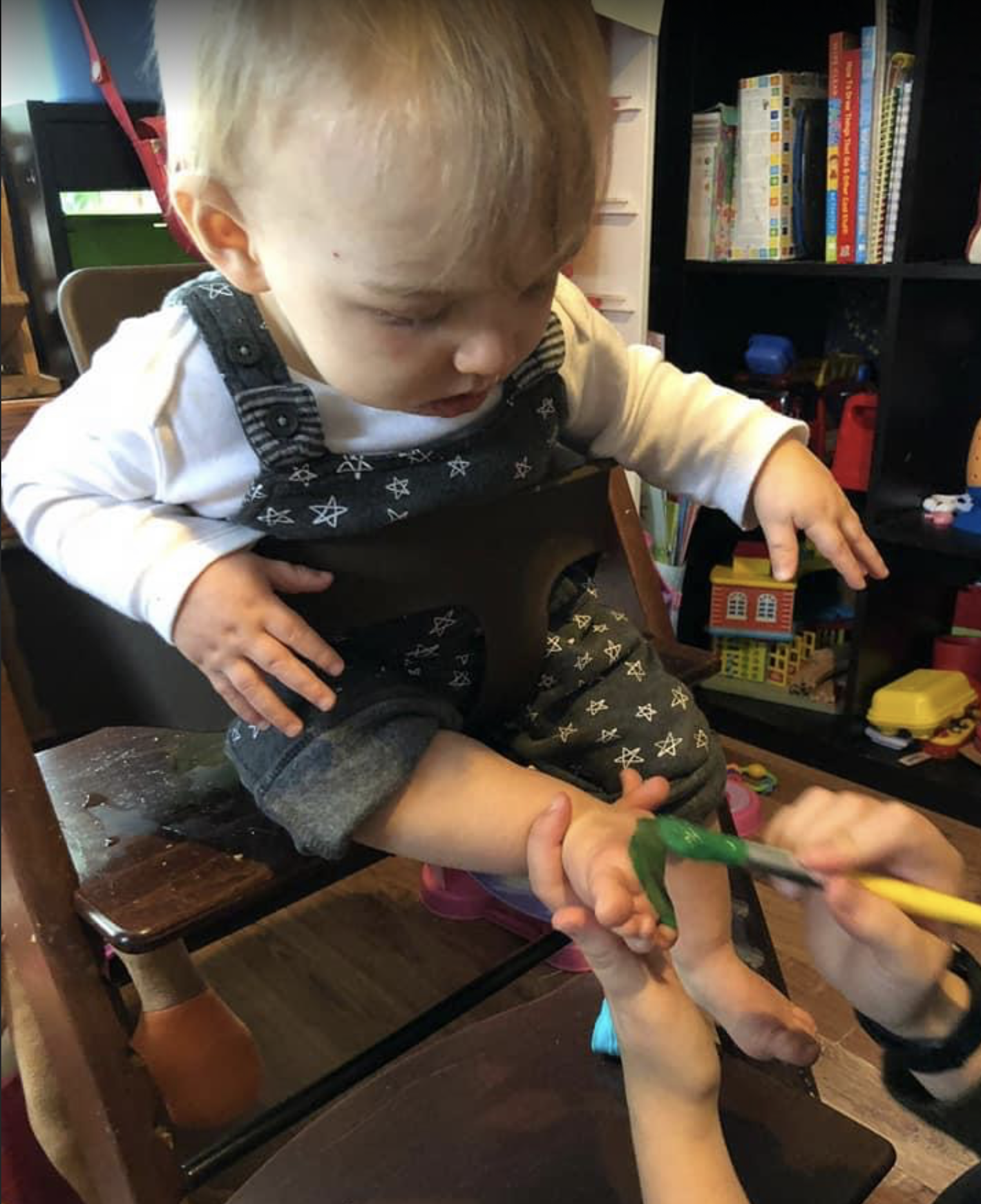Why we need to stop using highchairs for activities ?
Release Date: June 27, 2021
Last Updated: October 6, 2021
High Chair versus Freedom to Move
At The Curiosity Approach® we are inspired by the works and research of Dr Emmi Pikler an infant educator and paediatrician who developed a new approach instigated by her work and extensive research at an orphanage in Budapest. She developed a respectful way of caring and educating infants and toddlers that has become famous worldwide. The Pikler approach has for many years influenced early childhood care in countries in Europe and beyond, and was taken to the USA and developed as Resources for Infant Educarers (RIE) by Early Years Educator, Magda Gerber.
Emmi Pikler and Magda Gerber both believed the need to allow infants and babies time to move freely, uninterrupted or placed into positions they couldn’t get into naturally themselves. This means not ‘parking’ children in highchairs, reclining or Bumbo seats.
“We believe that the infant should be able to move and explore freely, to choose and change his own body position, to come and go as he wants — within the safe and challenging environment we create.” – Magda Gerber - Dear Parent – Caring For Infants With Respect
At The Curiosity Approach® we are a modern-day approach inspired by the works of Pikler, Gerber, Steiner, Montessori, Malaguzzi. We bring all these ingredients together to influence modern-day mindful and respectful practice and look to challenge traditional thinking and revolutionise outdated ways of working, that sadly do not benefit the children we serve.
Today, we look to consider the traditional use of high chairs for activities, arts, crafts and painting. WHO and for what PURPOSE is the highchair used for?
The CHILD or us the adult?
Is the ACTIVITY (in the high chair) to provide a stimuli for the infant, to complete a pre-determined activity planned and implemented by the ADULT, in contained surroundings, designed to help contain the MESS?
We have to consider the developmental stage of gross motor development, is a child physically ready to sit in a high chair? Or is the child placed in a position that is unnatural and posed on them too early? Are we placing musculoskeletal stress on the child, as they are propped up and their bodies are balanced, squashed with no core strength to assist babies to sit upright unaided. Janet Lansbury has written a great article helping to understand about sitting up children too early https://www.janetlansbury.com/...Would it not be more beneficial if we removed the confinement of highchairs and allow babies to CHOOSE if they WISH to engage, explore and be CURIOUS?

Are WE as adults dictating to a baby! WHEN & WHERE & WHAT he or she participates in?
The image above is from a Curiosity Approach® Childminder, Debbie Browne, who looks back on her own practice and says “ its funny, it doesn't even occur to me now to put a baby/ toddler in a high chair for an "activity" they are now available at their height, floor for crawlers, low table/ cable drum for starting to pull up explorers and at our "big table" for confident climbers to keep small parts safe from the crawlers... babies are more confident, more engaged, and most importantly, can withdraw from and return to an invitation at their own choosing.”
"Let the child be the scriptwriter, the director and the actor in his own play."
Magda Gerber
“If a child is in a baby seat, he can’t play by himself,” Pikler says. “If something falls down, he can’t pick it up himself and comes to rely on the mother’s rescuing him. He has to ask for help rather than learn how to solve problems. A restricted or confined child will become passive or cranky.”
Ref - From the blog: ‘Respect is the key to baby development’ by Rosanna Murphy.
At The Curiosity Approach®, we provide experiences for young infants in which they have freedom of movement to engage without restrictions and confinement. Experiences are placed at a child’s level, allowing them the opportunity to come and willingly investigate. Our settings are an “extension of home and not a watered-down version of school”. We look to step away from structuring planned ‘activities’ instead providing a rich and powerful environment, which is uncluttered and allows room for children to move and explore. They have the freedom to develop gross motor skills, using their whole bodies. Space to stretch, roll and crawl.

Through mindful practice and thoughtful observation of our youngest children, we see our babies as unique individuals. Educating with the child at the centre of everything we do. Posing the question "Who is it for AND WHY are we doing this?". It’s very much about "doing" WITH a child and NOT TO! Also taking into account Characteristics of Effective learning
- playing and exploring - children investigate and experience things, and ‘have a go’;
- active learning - children concentrate and keep on trying if they encounter difficulties, and enjoy achievements; and
- creating and thinking critically - children have and develop their own ideas, make links between ideas, and develop strategies for doing things.
Here below, is an image and prime example of "doing" to a child! Most certainly it was done with care, love and attention, most certainly it was fun and the child seemed to enjoy the experience. However, the child is passive in the experience. It is being ‘done’ to the child, instead of allowing the child autonomy over their learnings and experience. To be an active learner and having the ability to explore and be curious under their own terms. This is not about making educators feel guilty, it is a moment to aid reflection and aid professional development, knowledge and thinking. To see that there is a different way of doing things and if we look to the works of Emmi Pikler, we can influence provision, practice and empower our capable, curious and active learners. See the link here: https://thepiklercollection.we...

Alternatively allow the child to explore at their own pace...
Let us reflect and consider who is the high chair benefiting, us the adult because it is easier to organise, confine the mess into one space or does it benefit the child? Our children should be our WHY!
Educating and caring for our little ones through heart, body and mind.
At The Curiosity Approach® we treat all children with equal respect and it is of paramount importance that we take into account those children who have a have a physical disability or impairment and require and need different types of equipment, assistance and support to participate fully in their Early Years program. To be inclusive to all children and as stated above understanding Why, we use highchairs in our settings.
Being clear on our objective, is it to keep a child still in one place so that the MESS from the planned activity is contained or is it to meet the individual and physical needs of the child?
Have you read our blog on the removal of chairs for older children?
https://www.thecuriosityapproa...
Written by Stephanie Bennett
Copyright ©The Curiosity Approach2021 All Rights Reserved
All files and information and images contained in this Website or Blog are copyright-protected by The Curiosity Approach Ltd, and may not be duplicated, copied, modified or adapted, in any way without our written permission. Our Website or Blog may contain our service marks or trademarks as well as those of our affiliates or other companies, in the form of words, images, graphics, and logos. Your use of our Website, Blog or Services does not constitute any right or license for you to use our service marks or trademarks, without the prior written permission of The Curiosity Approach Ltd. Our Content, as found within our Website, Blog and Services, is protected under UK and foreign copyrights. The copying, redistribution, use or publication by you of any such Content, is strictly prohibited. Your use of our Website and Services does not grant you any ownership rights to our content


